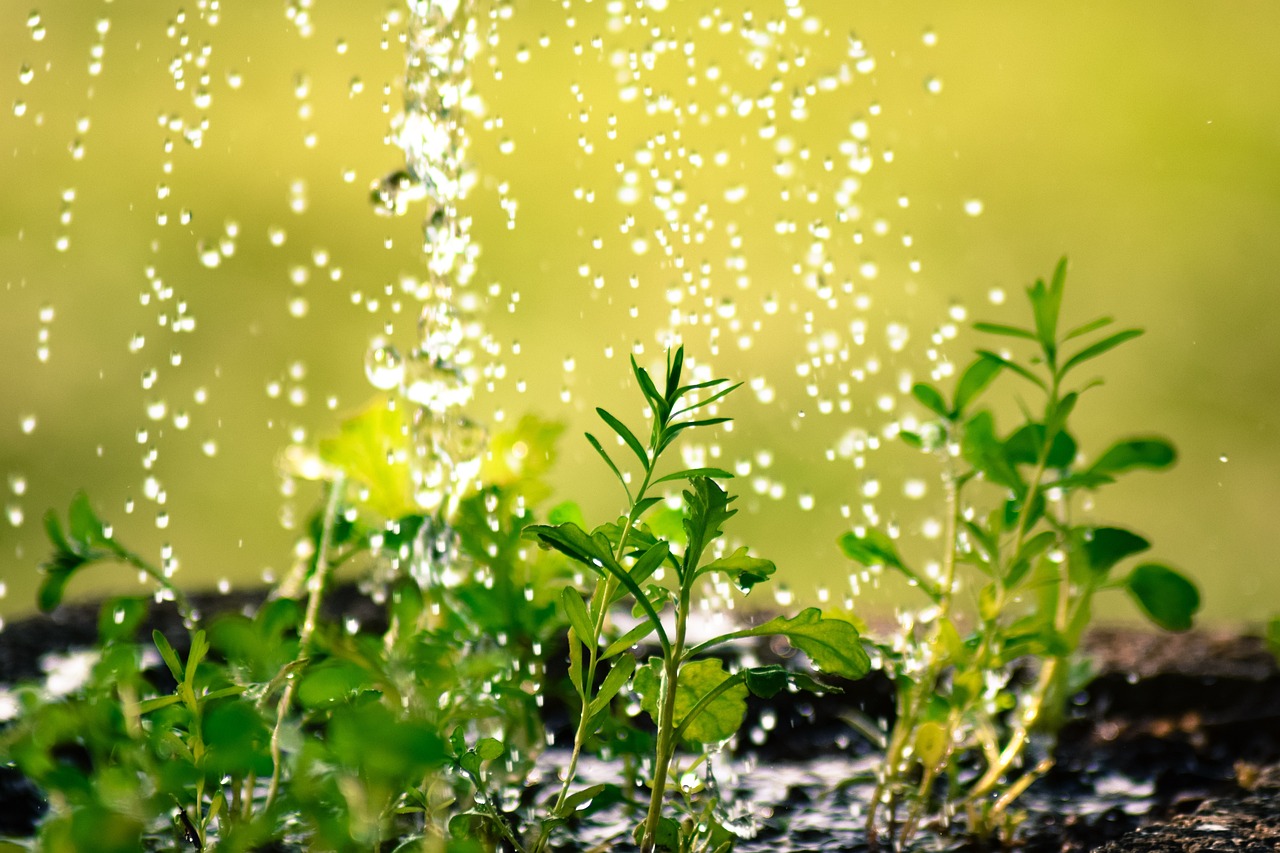
Utilizing Rainwater and Gravity: A Guide to Rain Gardens
Rainwater is an abundant source of hydration for plants and animals, and it requires little effort to use. Condensation and gravity do most of the work, so all we need to do is direct the water where it’s needed. A rain garden goes a step beyond simply collecting rainwater and funneling it toward our plants. The purpose of a rain garden is to collect rainwater, but that’s just the first step. Once water has collected, the garden should disperse it to plants and then allow it to drain back into the water table at an ideal rate. Besides permitting controlled absorption of rainwater, rain gardens can also filter harmful pollutants before letting the water pass back into the ground.
How Do Rain Gardens Work?
When rainwater strikes non-porous surfaces like roads, driveways, and roofs, it becomes runoff, which can pick up chemicals on the surface and erode sediment, then carry these substances into storm drains. But when more rainwater is directed toward a rain garden, the water is slowed down and can seep into the ground. Because (gravity) ensures that the water runs downhill, there’s no need for pumps or electric power: The rainwater runs into a depression in the ground, whether natural or artificial. Carefully selected plants make use of the water as it flows into a holding area or pond, where it gathers and slowly drains back into the soil.
- Rain Garden Basics
- How Does a Rain Garden Work?
- What Is a Rain Garden, and Why Is it Important?
- Rain Gardens: A Way to Elevate Water Quality
Rain Garden Benefits
When rainwater runs off hard surfaces like roads and driveways, it picks up pollutants such as oil and fertilizer. These chemicals can be concentrated in runoff and make the water harmful to the animals that drink from nearby streams and ponds. Enough pollution can even affect the safety of the drinking water we access from the water table. To combat this problem, rain gardens filter water from rain and storms. The rate of absorption can be adjusted by altering the garden’s mix of sand, gravel, and compost. The rainwater gradually returns to the ground and to nearby bodies of water, ensuring a safer water supply for people and animals. This process, known as bioretention, can act as a water treatment plant right in your own backyard. Bringing this ecological balance to your garden can even encourage pollinator activity, welcoming in bees and butterflies.
- What Is Bioretention?
- The Benefits of Bioretention Soil
- The Importance of Bioretention Systems
- Benefits of a Rain Garden
Designing Your Own Rain Garden
Selecting the site for your rain garden is one of the most important considerations. You’ll want an area with high and low spots or an area where you can artificially assist gravity. You may need to dig a trench or adjust the slope of a hill to ensure proper flow. Avoid sites under large trees where roots could infiltrate your garden. Also keep your rain garden away from homes and septic systems to avoid contamination. With your spot selected, make sure to test your soil. Clay-heavy soils will need a larger rain garden, while sandy or loamy ground can have smaller pond areas. Finally, a percolation test will tell you how quickly water drains through your soil. This is a simple matter of filling a hole with water and timing how long it takes to drain. Before digging any deep holes for your pond area, contact your local utility service (or dial 811 in the United States) to avoid any buried cables.
- Building a Rain Garden
- How to Create a Rain Garden in Your Yard
- Basics of Rain Garden Design
- How to Fix Runoff Issues With a Simple Rain Garden
Selecting and Placing Plants
Selecting the plants for a rain garden must be done carefully, but it can also be a lot of fun. Concentrate on plants native to your area to give your garden the best chance to thrive. On the inflow side of the garden, make sure your plants can tolerate low-moisture conditions. Since they’ll be positioned on a slope, they’ll get a bit of moisture from rainwater but won’t soak in it. Plants destined for the pond area should enjoy a variety of moisture conditions. This is because they’ll experience dry conditions when rain isn’t coming in but also wet days as rainwater seeps back into the ground. Otherwise, let your imagination run wild as you select a combination of ferns, grasses, woody shrubs, and perennials.
- How to Shape a Rain Garden and Create the Right Soil
- Plants for Rain Gardens
- Rain Garden Plant Selection
- Rain Garden Plant List
Maintenance
Fortunately, rain gardens don’t require complicated or grueling maintenance schedules. You will, however, want to keep an eye on the health of your garden to ensure that it continues to thrive. This includes observing the garden during periods of heavy rain to verify that the rate of water drainage is optimal. Any invasive weeds or non-native plant species should be removed. Plants should be pruned according to their seasonal demands. If you find any plants suffering from too little (or too much) water, consider transplanting them to another area of the rain garden or replacing them with a more agreeable species. With a bit of trimming and some loving care, your rain garden should continue to perform well for many seasons.

